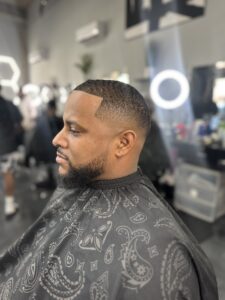Rhinoplasty, often referred to as a “nose job,” has long been a sought-after cosmetic procedure for individuals seeking to reshape, refine, or improve the function of their noses. However, as awareness of cultural identity and individual uniqueness grows, the field of cosmetic surgery has evolved to accommodate these distinctions through a specialized branch known as ethnic rhinoplasty. For individuals seeking Rhinoplasty in Islamabad, ethnic rhinoplasty offers a tailored approach that respects both cultural features and modern beauty goals.
Understanding ethnic rhinoplasty is essential for anyone who wants natural-looking results that enhance—not erase—the features that make them unique. Let’s explore what ethnic rhinoplasty is, why it matters, and what makes it different from traditional rhinoplasty techniques.
What Is Ethnic Rhinoplasty?
Ethnic rhinoplasty is a type of nasal surgery designed to refine or reconstruct the nose while preserving the ethnic characteristics and structural integrity specific to different racial and cultural groups. Unlike conventional rhinoplasty, which often seeks to achieve a Eurocentric aesthetic standard, ethnic rhinoplasty takes into account the anatomical and aesthetic differences present among diverse populations.
This includes:
-
Thicker skin
-
Broader nasal bases
-
Weaker cartilage support
-
Unique nasal tip structures
-
Distinct bridge shapes
The goal is to enhance harmony with the rest of the face, not to westernize or standardize features.
Why Ethnic Rhinoplasty Matters
1. Preserving Cultural Identity
Every face tells a story of heritage, lineage, and identity. One of the main purposes of ethnic rhinoplasty is to maintain these defining traits while making improvements based on the patient’s preferences. It allows patients to refine their appearance without losing the ethnic nuances that make them who they are.
This is especially important in regions like Pakistan, where facial features often reflect ethnic diversity across Punjabi, Pashtun, Baloch, Sindhi, and Kashmiri backgrounds. Skilled surgeons offering Rhinoplasty in Islamabad understand these differences and are trained to deliver subtle, personalized results.
2. Different Anatomy Requires Different Techniques
Ethnic groups typically have distinct nasal anatomies. For example:
-
South Asians often have a low nasal bridge, thick skin, and wide nostrils.
-
Middle Eastern individuals may have a pronounced dorsal hump and strong cartilage.
-
African and Afro-Caribbean patients often have soft cartilage, broad tips, and wide nasal bases.
-
East Asians may have flat bridges and rounder tips.
These differences mean that a “one-size-fits-all” surgical technique is not appropriate. Ethnic rhinoplasty involves customized approaches that take each patient’s anatomy into account.
3. Functional and Aesthetic Balance
Many people considering ethnic rhinoplasty are also concerned about nasal function, particularly breathing issues related to deviated septums, wide nostrils, or collapsed nasal valves. Ethnic rhinoplasty blends cosmetic improvements with functional corrections, ensuring that the nose not only looks good but works well too.
Key Considerations in Ethnic Rhinoplasty
1. Thick Skin Challenges
Thicker nasal skin—common among South Asian, Middle Eastern, and African populations—makes defining the tip of the nose more difficult. Skilled surgeons must work carefully to provide structure beneath the skin and achieve a refined appearance.
Solution: Use of cartilage grafts and support structures to create definition and durability.
2. Augmentation vs. Reduction
While traditional rhinoplasty often focuses on reducing size or projection, ethnic rhinoplasty frequently involves augmentation. This includes building up the nasal bridge or lifting the tip rather than shaving it down.
Materials used may include:
-
Patient’s own cartilage (from the septum, ear, or rib)
-
Synthetic implants (used carefully due to higher complication risks)
3. Tip Support and Definition
Ethnic noses with weak or soft cartilage need extra support to maintain structure over time. Without proper support, results may fade or collapse, especially in thicker-skinned patients.
Techniques include:
-
Tip grafts
-
Columellar struts
-
Shield grafts
4. Nostril Shape and Base Narrowing
Wide nostrils are a common concern among many ethnic patients. However, aggressive narrowing can distort the face and look unnatural. Surgeons must aim for proportional refinement while preserving natural curves.
Alar base reduction is one technique used to narrow the nostrils while minimizing visible scarring.
Ethnic Groups That Commonly Seek Specialized Rhinoplasty
1. South Asian Rhinoplasty
Common traits:
-
Low nasal bridge
-
Thick skin and soft cartilage
-
Wide alar base (nostrils)
-
Rounded or bulbous tip
Surgical Goals:
-
Enhance bridge height
-
Refine the tip
-
Narrow the base without erasing ethnic features
2. Middle Eastern Rhinoplasty
Common traits:
-
Prominent dorsal hump
-
Strong nasal bridge
-
Thick skin and strong cartilage
Surgical Goals:
-
Smooth the hump
-
Maintain nasal strength and proportion
-
Preserve profile harmony
3. African-American Rhinoplasty
Common traits:
-
Wide nostrils
-
Low and broad nasal bridge
-
Soft, weak cartilage
Surgical Goals:
-
Narrow nostrils subtly
-
Strengthen and define the nasal tip
-
Augment the bridge if necessary
4. East Asian Rhinoplasty
Common traits:
-
Flat nasal bridge
-
Round tip
-
Minimal projection
Surgical Goals:
-
Augment the bridge
-
Lift and define the tip
-
Maintain soft, natural results
Choosing the Right Surgeon for Ethnic Rhinoplasty
If you’re exploring Rhinoplasty in Islamabad, it’s crucial to choose a surgeon who is:
-
Board-certified with specialization in facial plastic surgery or ENT
-
Experienced in performing ethnic rhinoplasty
-
Culturally sensitive and understands the significance of maintaining identity
-
Equipped with modern techniques, such as ultrasonic rhinoplasty and 3D imaging
-
Transparent about realistic expectations and outcomes
A surgeon who understands the nuances of various ethnic anatomies will be able to craft a result that is both aesthetically pleasing and culturally respectful.
What to Expect in Recovery
Healing times for ethnic rhinoplasty are similar to traditional procedures but may vary depending on the techniques used and individual skin thickness.
Typical timeline:
-
1–2 weeks: Most swelling and bruising subsides
-
1–3 months: Initial results begin to appear
-
6–12 months: Final results settle as swelling fully resolves
Your surgeon may also recommend scar care, silicone tape, or nasal massages depending on the specific techniques used.
Final Thoughts
Ethnic rhinoplasty is not just about reshaping the nose—it’s about celebrating identity while refining aesthetics. For individuals seeking Rhinoplasty in Islamabad, this procedure provides an opportunity to enhance facial harmony without compromising their cultural features or nasal function.
By working with an experienced surgeon who specializes in ethnic rhinoplasty, you can achieve results that are natural, balanced, and empowering. It’s not about looking like someone else—it’s about looking like the best version of yourself.









